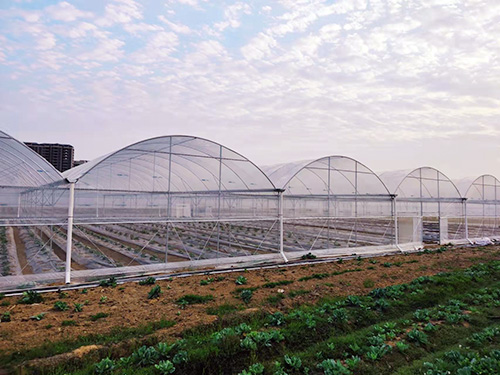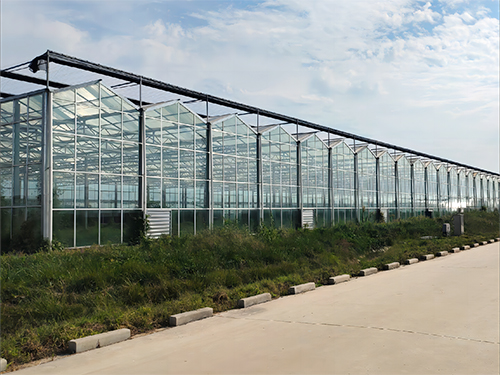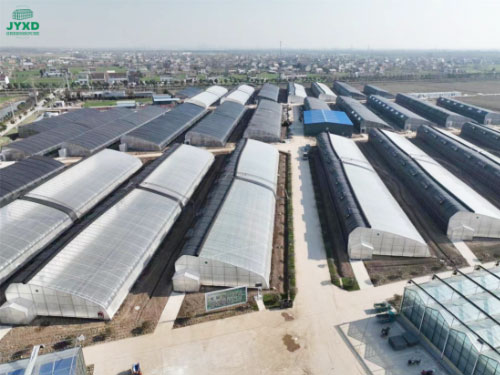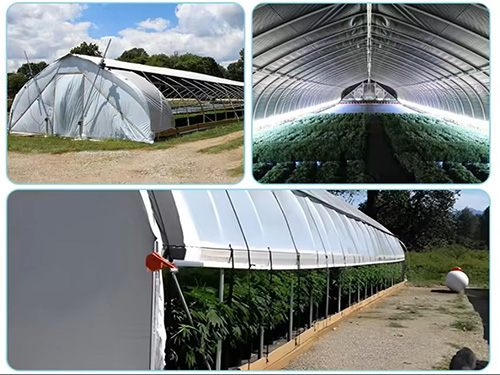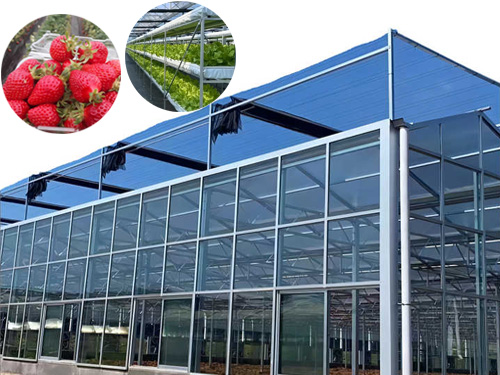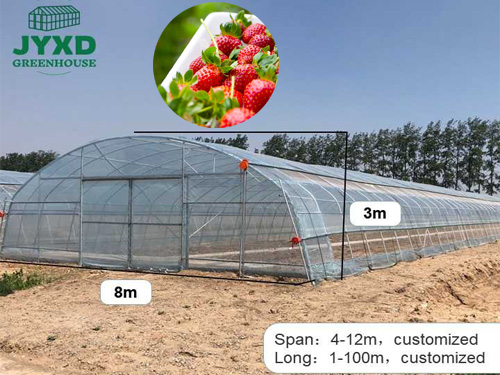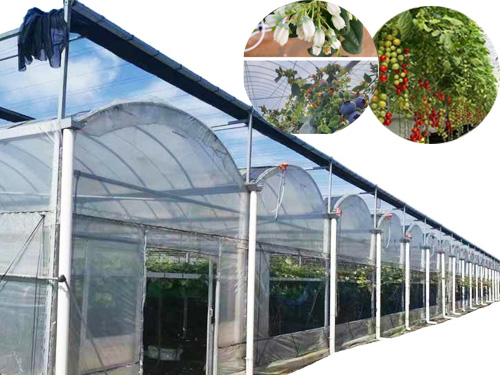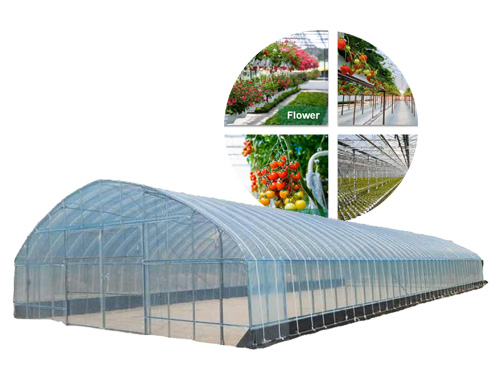NEWS DETAILS
NEWS INFORMATION
Light Management in Greenhouses: Best Practices to Enhance Plant Growth
AUTHOR:jyxd-greenhouse DATE:2024-11-19 17:48:34 HITS:163
In greenhouse agriculture, light management is one of the key factors influencing plant growth and yield. By effectively managing greenhouse light, growers can create a stable and optimal environment for plant growth, promote photosynthesis, and thus improve plant growth rates and yields. This article will introduce the key factors of greenhouse light management and best practices, helping growers optimize light conditions and improve the quality of plant growth in greenhouses.
1. The Importance of Greenhouse Light Management
Light is the foundation of plant photosynthesis and determines the growth speed and health of plants in greenhouses. Proper light management helps plants receive sufficient light energy during the growing season while avoiding light damage caused by excessive exposure to intense light. Greenhouse light management involves controlling light intensity, light duration, and light quality (spectrum) to provide the best light conditions for plants.
Keywords: greenhouse light management
2. Factors Affecting Greenhouse Light Management
To effectively manage light in a greenhouse, it is important to understand the following key factors:
Light Intensity: Different plants have varying light requirements. Some plants thrive in strong light, while others grow better in lower light conditions. In a greenhouse, light intensity can be controlled by adjusting the strength of artificial lighting or using shading screens.
Light Duration: The duration of light exposure directly impacts the efficiency of photosynthesis. A proper balance between daylight light duration and nighttime rest is necessary to avoid hindering plant growth.
Light Spectrum: Plants absorb light differently based on its spectrum. Red and blue light are most beneficial for plant growth, while green light has relatively little effect. Therefore, using LED lights with a red-blue light combination in greenhouses can increase light energy efficiency and promote plant growth.
Keywords: light intensity, light duration, spectrum
3. Best Practices for Greenhouse Light Management
To optimize light conditions in the greenhouse, here are some best practices to improve plant growth:
a) Use of Artificial Light Sources
In cases of insufficient natural light or weak sunlight in winter, artificial light sources such as LED lights can be used to supplement light. LED lights are energy-efficient and can provide specific spectra suitable for plant growth, such as the red-blue light combination, which significantly enhances photosynthesis efficiency.
b) Combine Natural Light with Artificial Light
The ideal approach to greenhouse light management is to combine natural light with artificial light sources. Natural light should be used during the day when sunlight is abundant, while artificial lighting should be used in the early morning, evening, or on cloudy days to ensure that plants receive stable light throughout the day.
c) Install Shading Systems
In summer or regions with excessive light intensity, the light in the greenhouse may exceed the plants' needs, leading to leaf burn or slow growth. Installing shading systems can effectively control light intensity, protecting plants from excessive light and ensuring that light levels remain within an optimal range.
d) Adjust Light Cycles
By adjusting light cycles, plant growth rhythms can be controlled. For example, extending light duration can promote rapid plant growth, while reducing light duration can help manage dormancy periods. Different plants have varying growth cycles and light requirements, and light cycles can be set accordingly for each plant type.
Keywords: artificial light sources, natural light, shading systems, light cycles
4. Light Requirements of Different Plants
Different plants have vastly different light requirements in greenhouses. Below are some common greenhouse plants and their light needs:
Vegetables: Plants like tomatoes and peppers require high light conditions and need prolonged light exposure.
Flowers: Ornamental flowers like orchids and roses have varying light needs. Typically, they require moderate light intensity and intermittent shading.
Leafy Greens: Plants like lettuce and spinach can grow in lower light conditions and are suited to shaded areas or LED lights with lower light intensity.
By understanding the light needs of different plants, greenhouse managers can personalize light management based on the habits of each crop, ensuring that every plant receives the appropriate light environment.
Keywords: light requirements, greenhouse vegetables, ornamental flowers
5. Smart Solutions for Greenhouse Light Management
Modern greenhouse light management is increasingly becoming more intelligent. The integration of Internet of Things (IoT) technology and smart control systems makes light management more precise. By installing light sensors, greenhouse managers can monitor light intensity in real-time and automatically adjust the switching and intensity of artificial light sources through smart control systems. Additionally, data analysis technologies can help greenhouse managers optimize light plans based on historical data, further improving light management efficiency.
6. How to Assess the Effectiveness of Light Management
After implementing light management, the effectiveness can be evaluated by observing plant growth:
Growth Rate: With sufficient and optimal light, plants grow faster and have more vigorous leaves.
Leaf Color: Proper light will result in healthy, deep green leaves, while excessive or insufficient light may cause leaves to yellow or turn brown.
Flower and Fruit Yield: For fruit and vegetable plants, proper light management often leads to more flowers and fruits, increasing yield.
Conclusion
Greenhouse light management is a critical aspect of ensuring healthy plant growth. By employing appropriate light management measures, such as using suitable artificial light sources, combining natural and artificial light, installing shading systems, and implementing smart management techniques, greenhouse managers can provide optimal light conditions for plants, promoting their growth and increasing yields. The intelligent development of greenhouse light management also provides more precise solutions for the future of greenhouse agriculture.
Hebei Juyou Xinda Greenhouse Facilities Co.,Ltd.
Copyright © 2024-2025 https://www.jyxd-greenhouse.com. All Rights Reserved Hebei Juyou Xinda Greenhouse Facilities Co.,Ltd.Copyright





 Current Location:
Current Location: